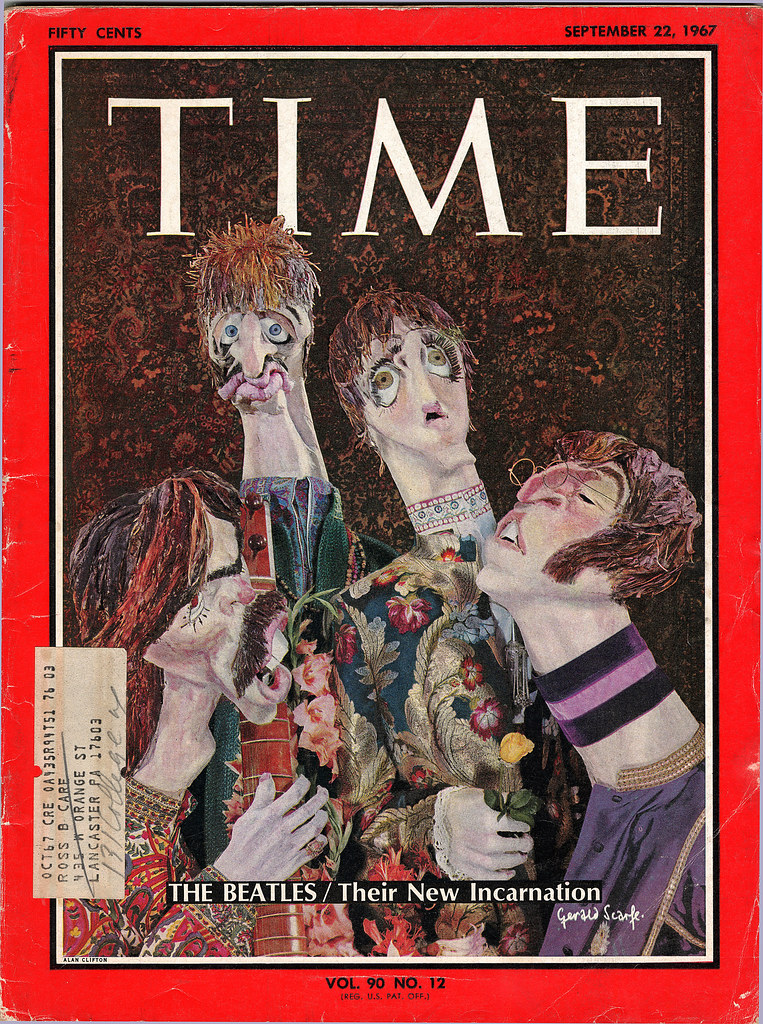
Caricature of John Ruskin by Adriano Cecioni for Vanity Fair, February 17, 1872. (Photo: Wikimedia Commons, Public domain)
If you’ve ever been on a family vacation, you’ve likely come across caricature artists on beach sidewalks, fairs, or tourist spots. Today’s caricature artists are known for illustrating comical, exaggerated portraits of their subjects. However, you might be surprised to hear that the silly art style was once a highly-regarded art form that originated in the 16th century.
Did you know that Leonardo Da Vinci drew caricatures? During the European Renaissance, successful artists were expected to capture their subjects as realistically as possible, however, many creatives held a space in their sketchbooks for caricature art. Da Vinci was fascinated by the human form and the oddities of human faces. His series of “grotesque heads” from the 1490s sought to poke fun at his subjects by representing them as extreme versions of themselves. Before long, the caricature style of drawing was popular around the world, and became a way for artists to ridicule public figures and politicians. Read on to discover the history of caricature art, and get to know some of the most famous caricature artists from the 20th century.
What is a Caricature?
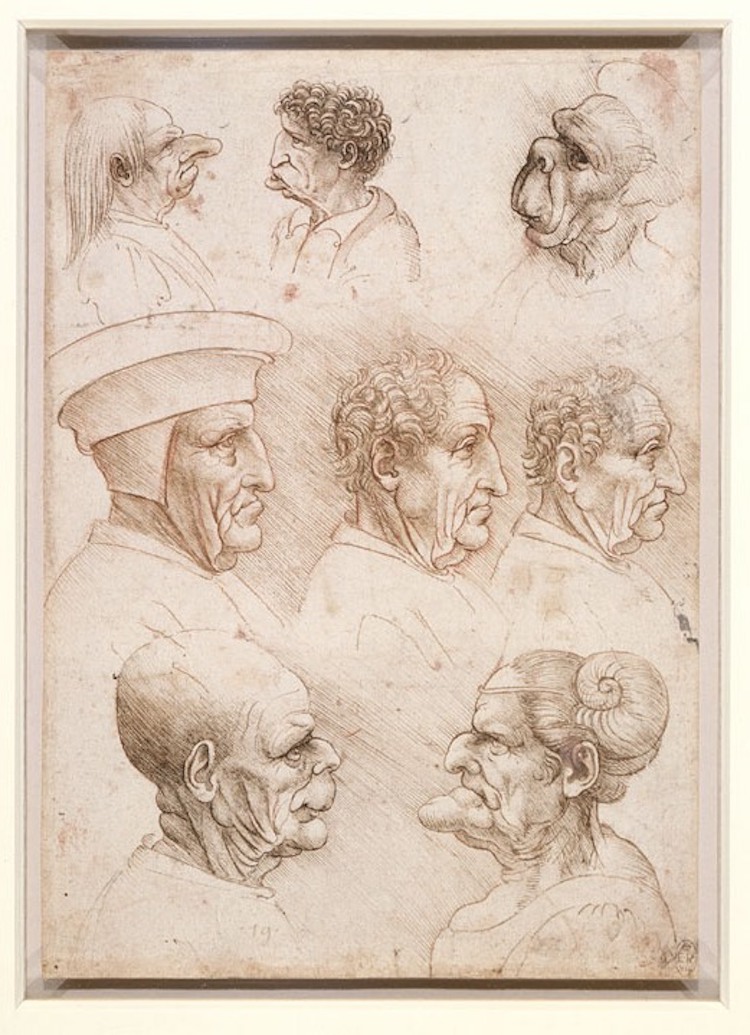
“Five grotesque heads, and three heads of men in profile,” by Leonardo da Vinci, c.1510–20. (Photo: Wikimedia Commons, Public domain)
The word caricature comes from the Italian words carico and caricare, meaning “to load” or to “exaggerate.” Caricature is the art of capturing a likeness of someone, through a method other than pure representational portrait, and usually with an aspect of humor. The artist’s goal is to emphasize specific features that make a person unique.
The History of Caricature Art
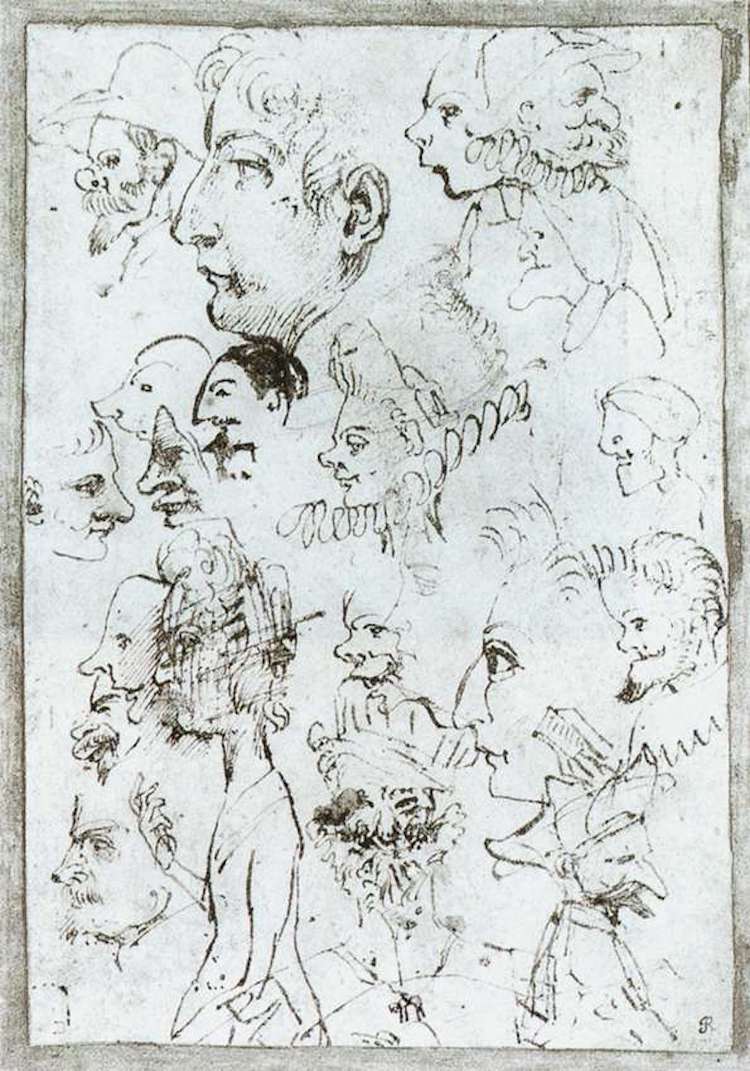
Caricatures by Annibale Carracci, circa 1595. (Photo: WikimediaCommons, public domain)
For hundreds of years, artists strived to create art that was representational and full of lifelike details. However, some of the first artists known to deviate from that ideal were Italian brothers Annibale and Agostino Carracci, who during the 1590s, would draw exaggerated portrait sketches for fun. They mocked theories taught to them at Carracci Academy in Bologna, and even left descriptions in their sketchbooks that confirmed this. Caricature remained mostly an Italian art form for the next hundred years, but the trend began to catch on in other parts of Europe by the 1800s.
In 19th century France, Charles Philipon, owner of the magazine La Caricature, often depicted King Louis-Philippe with a pear-shaped face. This was offensive to the royal, since it was intended as a French sexual pun. The motif became the universal symbol for the king’s regime, ultimately encouraging the public to see Louis-Philippe in a satirical light. As a result of Philipon’s caricatures, a French law was passed concerning the freedom of press, and a ban of political caricature came into effect. Honore Daumier was another French caricature artist who illustrated for La Caricature. He was also famous for his cutting political cartoons that criticized King Louis Philippe, and his art even led to him spending six months in jail.
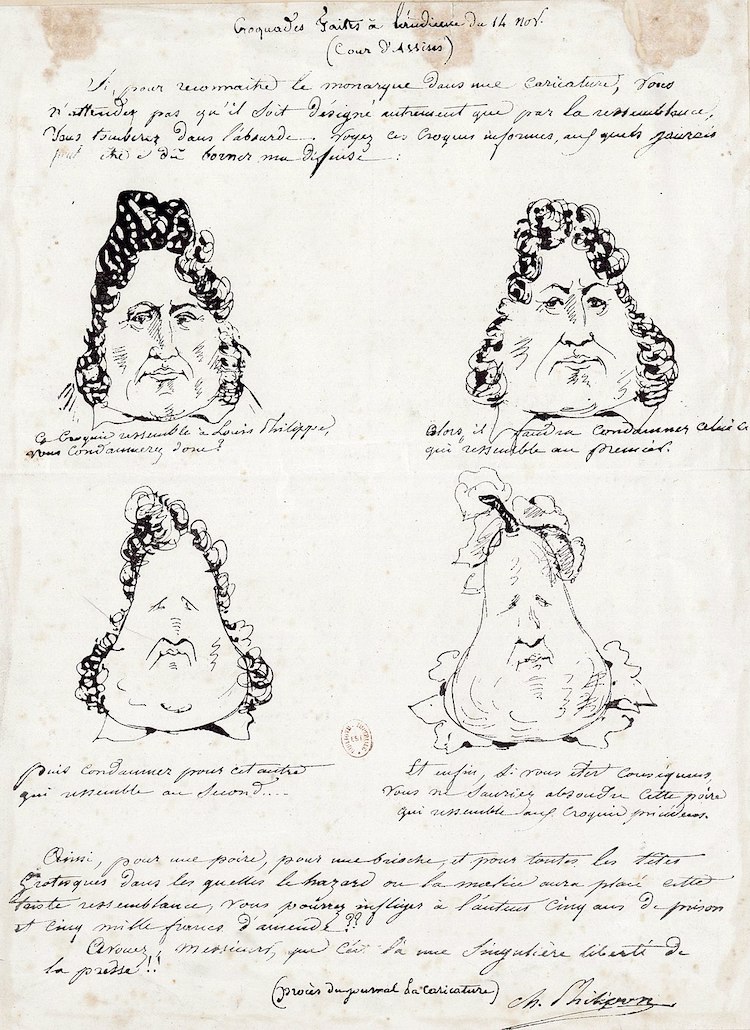
Caricatures of King Louis-Philippe by Charles Philipon, 1831. (Photo: Wikimedia Commons, Public domain)
In the U.S., Thomas Nast was the most influential American political cartoonist during the mid-to-late 1800s. With his caricatures, he helped to bring down the Boss Tweed ring and New York’s corrupt Tammany Hall. The artist is also responsible for the jolly image of Santa Claus we know today.
During the Industrial Revolution, the invention of the railway meant that newspapers and magazines were widely distributed, and more people were exposed to the art of the caricature. Then after the First World War, the genre began rivaling photographs in newspapers all over the U.S. A new era of 20th-century caricature artists boomed. They showed how caricatures could not only be amusing, but also act as visual commentaries on society and politics.
Famous 20th Century Caricaturists
Sir Max Beerbohm
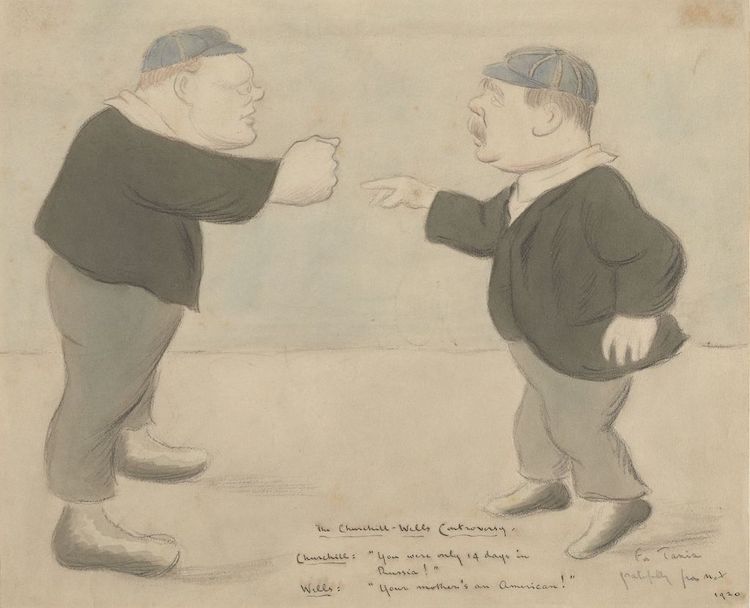
Caricature of the controversy between Winston Churchill and H. G. Wells, by Sir Max Beerbohm, 1920.
Dialogue reads:
Churchill: “You were only 14 days in Russia!”
Wells: “Your mother’s an American!”
(Photo: Wikimedia Commons, Public domain)
British artist Sir Max Beerbohm created drawings that mostly dealt with late Victorian and Edwardian political, literary, and theatrical personalities. His caricatures were usually rendered in pen or pencil with subtle watercolor tinting. Hundreds of illustrations were published in popular magazines at the time, including Vanity Fair and Strand Magazine. He was recognized by The Times in 1913 as “the greatest of English comic artists.”
David Levine
View this post on Instagram
American caricaturist David Levine was famous for his pen-and-ink caricatures of famous writers and politicians. His drawings were published in Time magazine, Playboy magazine, and The New York Times. Additionally, he drew more than 3,800 pen-and-ink caricatures for The New York Review of Books. Levine loved exploring human flaws through his art. He once said, “I love my species.”
Mort Drucker
View this post on Instagram
As a caricaturist for MAD magazine for over five decades, Mort Drucker was most famous for his satirical caricatures of film stars and TV actors. He also contributed covers and editorial illustrations to Time magazine and won a number of awards from the National Cartoonist Society.
“I’ve discovered through years of working at capturing a humorous likeness that it’s not about the features themselves as much as the space between the features,” said Drucker. “We all have two eyes, a nose, a mouth, hair, and jawlines, but yet we all look different. What makes that so is the space between them.”
Gerald Anthony Scarfe
English cartoonist and illustrator Gerald Anthony Scarfe created caricatures for The New Yorker, The Sunday Times, Punch Magazine, and many more publications. He also created graphics for Pink Floyd, particularly on their 1979 album The Wall, and was the production designer on the Disney animated feature, Hercules.
In 2003, Scarfe collaborated with the National Portrait Gallery and BBC Four to make caricatures of a number of famous Britons. In his distinct style, he depicted Henry VIII; Winston Churchill; Queen Elizabeth I; Pete Best; Richard Branson; Adam Smith; William Blake; The Beatles; Agatha Christie; and Diana, Princess of Wales. Each illustration brilliantly highlights each person’s heroic (or villainous) attributes.
Al Hirschfeld
View this post on Instagram
Albert Hirschfeld was an American caricaturist best known for his black-and-white portraits of celebrities and Broadway stars. Using a crow quill, he rendered his drawings in black ink. His swift, sure lines inspired countless artists, illustrators, and cartoonists that came after him. He Contributed to The New York Times for seven decades, and his caricatures were also published in The New Yorker, Collier’s, The American Mercury, TV Guide, Playbill, New York Magazine, and Rolling Stone. His unique portrait illustrations were even used in the original movie posters for Charlie Chaplin’s films, as well as The Wizard of Oz (1939).
Related Articles:
Custom Caricature Drawings Make the Perfect Gift for Any Occasion
Illustrator Recreates Celebrities in 9 Different Cartoon Styles
People Around the World Ask This Artist to Reimagine Them as Cartoons
Adorable Service Dog Patiently Poses for a Caricature at Disneyland

